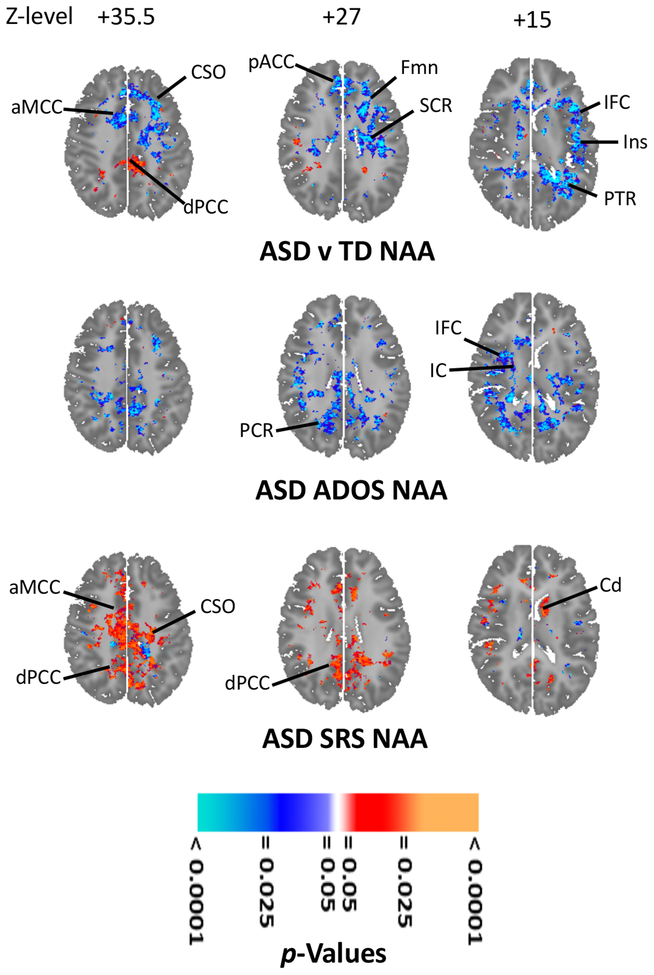Figure 2.
Effects of autistic spectrum disorder (ASD) and its symptoms on N-acetyl-compounds (NAA) levels. Statistical parametric maps on axial brain template. NAA is higher (orange-red) for 68 ASD than for 93 typically developing (TD) participants in dorsal posterior cingulate cortex (dPCC)(left upper); NAA is lower (cyan-blue) in centrum semiovale (CSO), forceps minor (FMn), superior corona radiata (SCR), posterior thalamic radiations (PTR), anterior middle cingulate cortex (aMCC), pregenual anterior cingulate cortex (pACC), inferior frontal cortex (IFC) and insula (Ins). (Covariates: age, sex, FSIQ and use of any psychotropic medication.) NAA (left middle) correlated inversely (cyan-blue) with symptoms (Autism Diagnostic Observation Schedule—ADOS--Total Score) in posterior corona radiata (PCR), internal capsule (IC) and IFC. (Covariates: age, sex, medication; 68 ASD.) NAA (left lower) correlated positively (orange-red) with symptoms (Social Responsiveness Scale—SRS--Total Score) in CSO, aMCC, dPCC, and left caudate (Cd). (Covariates: age, sex, medication; 62 ASD.) All results corrected for multiple comparisons using false discovery rate. For further results including similar effects for other anatomic sections and other metabolites see Supplemental Results.

